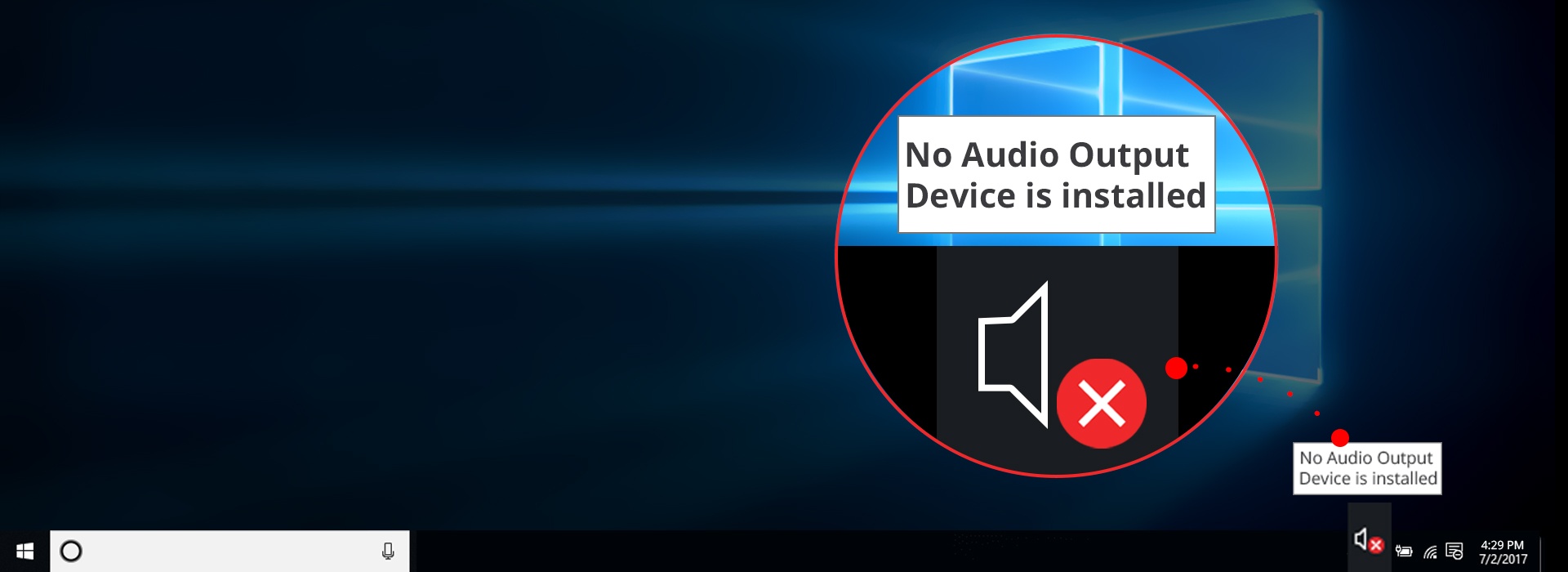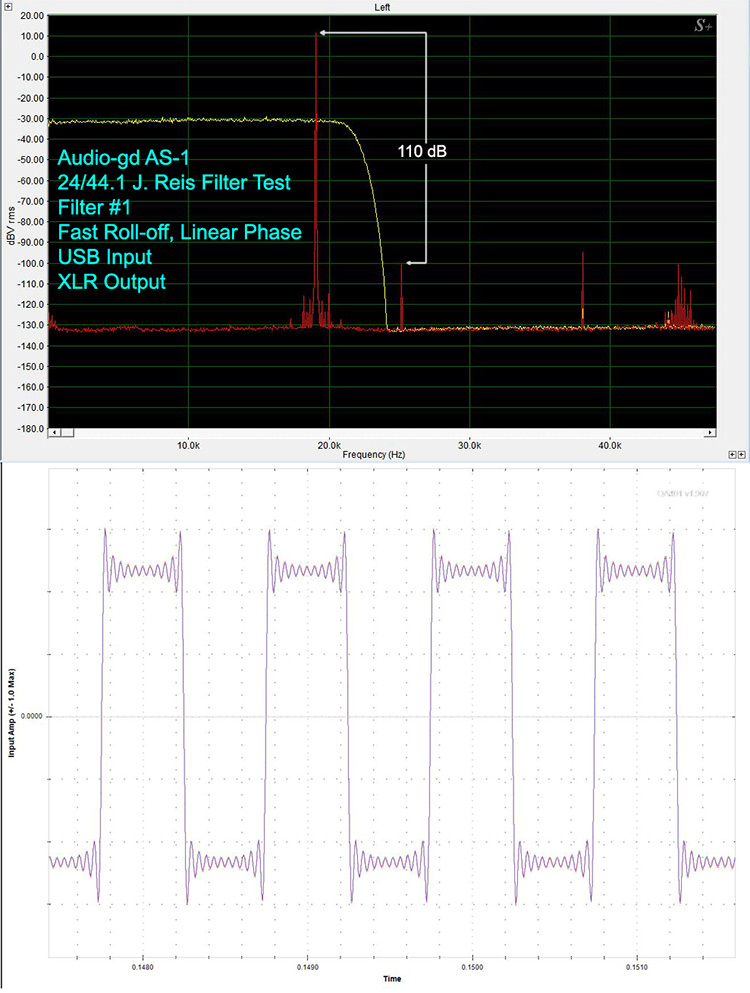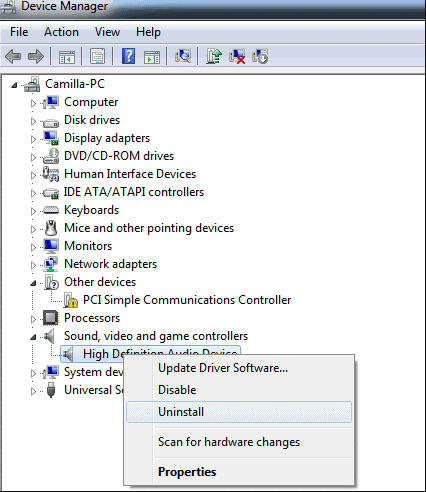1-1-2016
'Audio-GD Master 7 Amanero NOS mode'
by Maarten van Druten
Note:
This review is not about explaining the technical DSP technologies of the Master 7 DAC
like stopband filter, PLL and Dithering.
It's just a review about how I experienced the different settings and what the effects are on the music
Amanero Combo 384 module upgrade
Recently I have upgraded my Audio-gd Master 7 DAC with the 'Amanero Combo 384 module'
I found out that this modification gave my DAC a big upgrade in sound quality.
The extreme low-jitter combined with the very natural and precise sound scape pushed the level of my musical enjoyment to a higher level.
I wrote in my earlier reviews that 'I2S' was the way to go, but this was before I got the 'Amenero Combo 384' upgrade.
After listening to the 'Amanero Combo 384 module' one thing has became clear to me;
USB is also capable to deliver a very good data connection between two digital devices.
In fact I found the quality of the 'Amanero Combo 384 module better compared to the i2s interface card.
I personally think that not only the technology is important, but how it is implemented.
For example, an 'I2S' interface card in a standard PC with standard power supply will never sound as good as the Amanero 'USB' interface.
The 'Amanero Combo 384 module' has 2 dedicated low-jitter audio clocks.
Besides the two clocks, it also includes an ultra-fast FPGA (Field programmable gate array) chip.
This chip is programmed to do calculations at amazingly high speed.
The 'Amanero Combo 384 module' works in 'USB asynchronous mode', that means that the 'Master 7 DAC with Amanero Combo 384 module' with the two low-jitter clocks sets the definition of a second, and the audio streamer has to match the DAC.
The quality of the 'Amanero Combo 384 module' low-jitter audio clocks are very good, this gives the music
a stable, smooth, and more natural sound.
Because of this low-jitter the 'Amanero Combo 384 module' is especially suitable for playing in NOS mode.
Jos of Magna-hifi advised me to to experiment with the Master 7 DSP settings, and so I did! I have experienced a lot. I have to say, the NOS mode on other DAC's sometimes improved the sound but they never impressed me so much as it did now.
One of the big advantages of 'Audio-gd' products is that they are upgrade friendly, and that they
can be modified easily.
To put your Master 7 in NOS mode you only have to remove (carefully) the top plate, and place some small 'jumpers' in another position.
That's all!
Audio-gd Master 7 DAC - with top plate removed
Here is the place were the jumpers are sitting, they can be easily removed by using a tweezer
The most difficult part is to find those jumpers, because they are almost not used anymore in modern computers.
Sometimes you will find them at the backside of an old hard-disk (master slave jumper) or a computer CD-ROM player. Or search the internet and buy some for a dollar. Audio-GD provides jumpers when you purchase a Master 7 but I lost them apparently.
In the end I found jumpers and now it was time to experiment.
How to put the Master 7 in NOS mode?
There are a lot of contradictory articles on the internet how to put the Master 7 in NOS mode...
The explanation in the use manual makes it confusing as well:
In example: The 'bypass' jumper must be placed when you want to use DSP.
If you remove the 'bypass' jumper the DSP is in 'bypass mode' :-)
Do you get it or are you confused already? Bypass jumper placed (=ON) means: DSP Enabled
No jumper (=OFF) means: DSP Disabled
Note: when the DSP is disabled, none of the settings will have effect anymore. (*) NOS Mode
First of all what is NOS mode?
'None Oversampling' in my opinion is 0X oversampling (none = 0, one = 1)
But what I heard from others is that NOS means 1X oversampling.
Jos of Magna Hifi confirmed the following scheme:
Oversampling/IPS0/IPS1
8X OFF OFF
4X OFF ON
2X ON OFF
1X ON ON
So to set your Master 7 DAC in NOS mode; both 'IPS1' and 'IPS0' have to be bridged with a jumper.
When you remove the Bypass jumper, the Master 7 will be in NOS mode.
But according to Jos of Magna Hi-Fi is removing the bypass jumper not recommended,
because then you will not be able to change stopband filter or any other setting.
After setting my DAC in 'NOS' mode, I was very excited about the positive effect on the sound. I found that this setting turned out in a warmer sound, also the voices were presented in more natural way. I also heard more details.
I even heard small details of instruments and sounds that I never heard before on my CD's!
It just sounds if a piece of cloth that was sitting on your speakers all the time is finally removed
This NOS setting makes the sound also more organic, more natural.
The downside of it is this comfortable and organic sounding NOS setting, is that
the precision of the placement of the instruments is less good compared to 8X oversampling mode...
It sounds like that the instruments are placed inwards, instead of outwards
I also can imagine that for a lot of listeners find the NOS sound maybe a little bit too sharp, and even maybe too piercing...
but if you have experienced live acoustic jazz concerts (without amplification) in café’s than you know how loud and powerful a drum and saxophone can sound.
The NOS setting comes far more close to the real thing than the 'lame' 8X oversampling setting
The bass was also very good in this NOS setting, this is really remarkable, because the bass sounds already very good with the default 8X oversampling but in NOS mode the bass sounds even deeper
Listening to the NOS mode it clearly had more punch and it had also a bigger physical presence in my environment.
Baduizm Live by Erykah Badu sounds amazing and very realistic; her voice is presented very clear
and full emotion. Sometimes it even gave me goosebumps when she was singing.
The cymbals on Art Blakey & the Jazz Messengers CD sounds also very realistic.
My girlfriend agreed with me that the NOS mode sounded more realistic, more live.
'NOS' mode sounds also less digital and synthetic to me, for it sounded just more 'analogue' and 'direct'
This setting really impressed me in a positive way, I can advise people to try this setting
if a more realistic, open and dynamic sound is your goal 2X times oversampling When I started to experiment with the settings and confused by the information on the web I thought this was the NOS mode but it turns out this is 2x Oversampling. Personally I do not really care if it is 1 or 2 or 8 times, I use my ears and listen and decide what I like most! The music sounded great and it sounded very warm, and comfortable.
I liked it so much that I brought my Master 7 DAC to my friend Hans van den Barg to test it.
(At that time we were still thinking my Master 7 was playing in NOS mode... ;-)
Hans van den Barg has built his own NOS DDDAC based on the design of the Dutch audio designer
'Doede Douma'.
His NOS DAC has 4 decks, and has also 8 dac chips working in parallel, quite similar as the Master 7.
Only the Master 7 uses the Burr Brown PCM-1704UK chips and Hans his dac uses the Burr Brown PCM1794 chip.
We tested multiple songs that day, and after some time one thing became The Audio-gd Master 7 in 2x OS configuration sounds
sounds very, very good!
We listened multiple times to the 192 kHz test recording of record label 2L:
'Mozart: Violin concerto in D major - Allegro - Marianne Thorsen / TrondheimSolistene'
The violins sounded very natural, and also the placement of the instruments was very precise.
The music was sounding very smooth, and was very pleasant to listen too.
My Audio-gd Master 7 playing In Hans setup
Even Hans has to admit that the Audio-gd Master 7 was clearly better sounding that day then his
modified DDDAC with lineair power supply.
This 2X oversampling setting is also recommend, it gives a more balanced and smoother sound then the 'None Oversampling' mode, and it sounded more musical and alive than the '8X' oversampling mode...
Default 8X times oversampling This default setting: 8X times oversampling and -130dB stopband filter. Dithering is enabled, while PLL is disabled by default.
The music sounds open, fast, the bass is good, and the placement of instruments is very precise. Personally I think that the music can sound sometimes a little bit dull in this setting, but that's not the fault of the dac.
The Master 7 dac is very neutral, and when you play a bad recorded piece of music, the 'music'
that comes out also sounds bad...
So look for good recorded music on labels like '2L - the Nordic sound' and your Master 7 dac will show you
how good a dac can sound!
This setting is recommended if a more balanced and neutral sound is your taste.
Let's experiment
This setting was also advised to me to try,
I tried it and I found that music sounded very relaxed and balanced.
In this mode the stopband is set to -50dB instead of the default -130dB.
This setting sounded almost the same than the NOS mode, but there were differences.
The NOS mode sounds more energetic, has more bite and sounded more 'live'
I also found that the NOS mode sounded more warmer and more pleasant to my ears
It's just like that the NOS mode sounds more 'analogue'
I tried this setting and the music sounded also very relaxed and balanced.
This setting sounded almost the same as the NOS setting but there were little nuances.
The music sounded little bit more 'lifeless'
For me it was just that the music lost a bit of it's drive.
There a lot multiple different combinations possible, Jos of Magna Hi-Fi recommend me his preferred settings:
This configuration is 1x Oversampling (NOS) and -90dB stopband filter. This setting sounded also very relaxed and warm, but for my taste it was missing the dynamics and punch that
I was looking for.
I liked my 'NOS' mode better (without the 'bypass' jumper) because I found that the music sounded this way more energetic, and also the bass was better defined.
But everybody has different loudspeakers and amplifiers, therefore the Master 7 DAC settings described here can be sound completely different on your set-up.
Therefore I really encourage you, to experiment with these settings and configure it to your taste. There is no good or wrong setting. If you want, share your experiences on the internet.
Just make sure that you first power off the DAC and amplifier before modifying the jumper settings!
My favourite setting
NOS mode 2X oversampling My favourite setting My favourite setting is a combination of 'NOS mode', with some parameters from the '2X oversampling' setting
that I also liked.
Putting jumpers on IPS1 and IPS0 make NOS mode, and ATT1 and ATT0 are for the Digital filter Stopband Attenuation.
- 130 db -130 db -90 db -50 db ATT1 OFF OFF ON ON
ATT0 OFF ON OFF ON
By putting jumpers on both ATT1 and ATT0 the Digital filter Stop band Attenuation is set to -50 dB.
The music is more open and comes loose from the loudspeakers, compared to the -130dB
The music also comes free from the loudspeakers, instead of the 'NOS mode' setting were
the music perspective is turned inside out, and it feels if the music is sitting behind the loudspeakers...
My favorite settings preserves the direct and 'live like' sound of the of the 2X oversampling mode and -130dB stopband filter.
Again I really recommend to test this setting yourself! and let me know what you think about it
What is still not 100% clear to me is the fact of the 'bypass' jumper should be placed to make
the Digital Stop band filter work...
For the time being I leave it this way, because for me it works, and sounds perfect.
Jos of Magna Hi-Fi recommends to use the 'bypass' jumper for NOS settings, because when the DSP is disabled, none of the settings will have effect anymore.
But I could hear differences between 'my' NOS and 2X oversampling mode 'without' using the bypass jumper...
And this is contradiction on earlier statement... so this issue is something I will investigate futher.
If you have also have experienced this please sent me a mail.
Conclusion:
When I first listened to a 'NOS' dac, it was one of the first editions of the Oritek Zhaolu DAC.
I was not so impressed by this Oritek DAC, because it sounded very dull because the higher frequencies were cut off too much...
So I was a little bit reticent about putting my Master 7 DAC into NOS mode.
But after many experiments and many hours of testing, my thoughts about NOS mode are completely changed
I now think that NOS sounds more musical, more direct and more realistic than 8X oversampling.
The music sounds more punchier, and more powerful, and there are also more details to discover.
The higher frequency are still good, and the music sounds very alive
The mid tones (for example the voices) can sound more present, and this will maybe not appreciate
everybody.
A disadvantage of the NOS mode is that the sound perspective changed, the instruments are not placed
precise anymore into the listening room.
This can be fixed by putting one or two jumpers on the Stopband Attenuation (ATT1, ATT0)
Then the perspective is restored while the typical NOS sound is preserved
I also think that the music sounds more 'real' in NOS mode.
So if you are looking for a more open, realistic and more live like sound I can really can recommend to experiment with the 'NOS' setting
I'm amazed about the fact that by just chancing some jumpers inside the Audio-Gd Master 7 DAC
you can change the complete sound character of this product.
It's like that you get a free 'NOS' DAC for free!
Thanks to Kingwa and his modular and DIY approach, the buyer doesn't have to invest every time in buying new High-End equipment, but the equipment can be easily upgraded, or modified by changing a small jumper
I really recommend to tweak your Master 7 to your personal taste, so go to look for some jumpers and experiment
You will be amazed how easily the musical experience can be changed in a positive way, just by placing a small jumper
Experiment en Enjoy! Audio Dandy
Contact: audiodandy@gmail.com
Special thanks to Rob & Jos from Magna Hifi for
excellent support and service!
http://www.Magna Hifi.com/
BACK
Copyright(C) 2015 All Rights Reserved |





